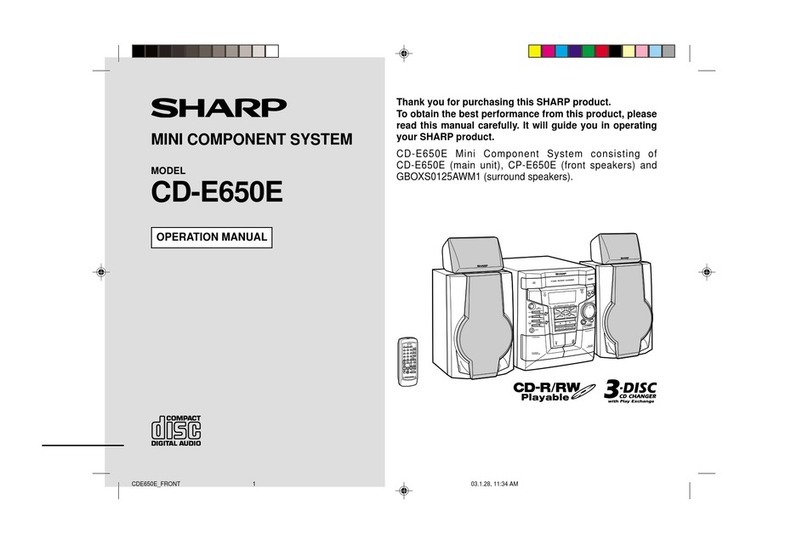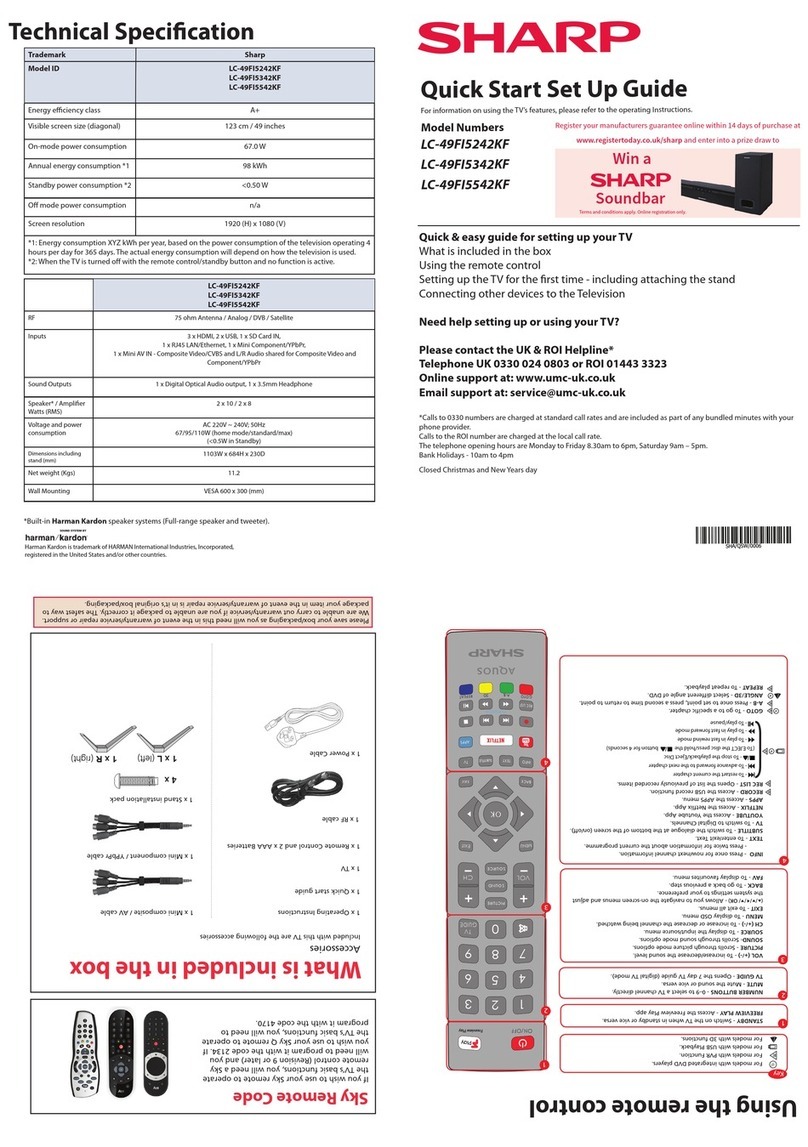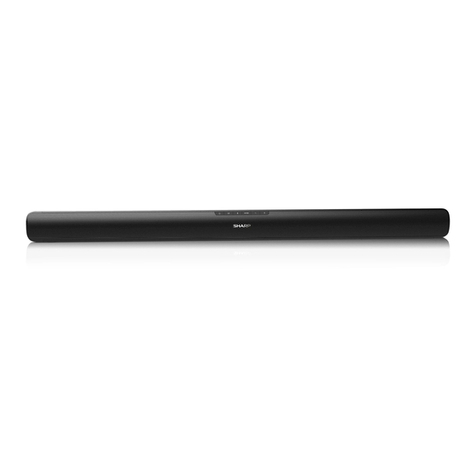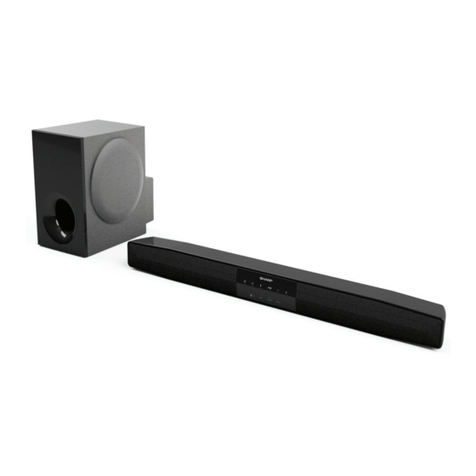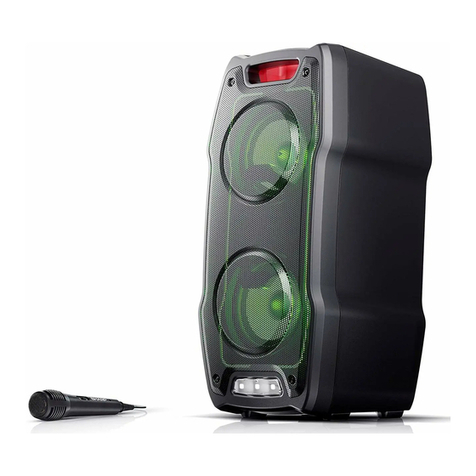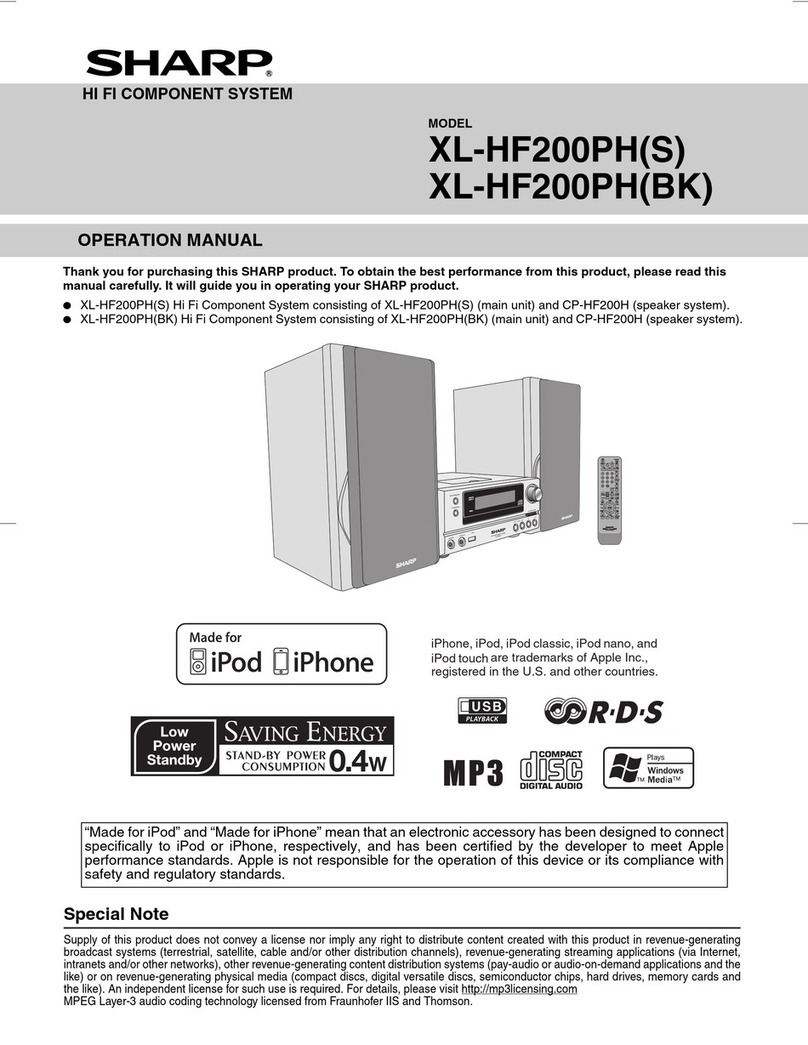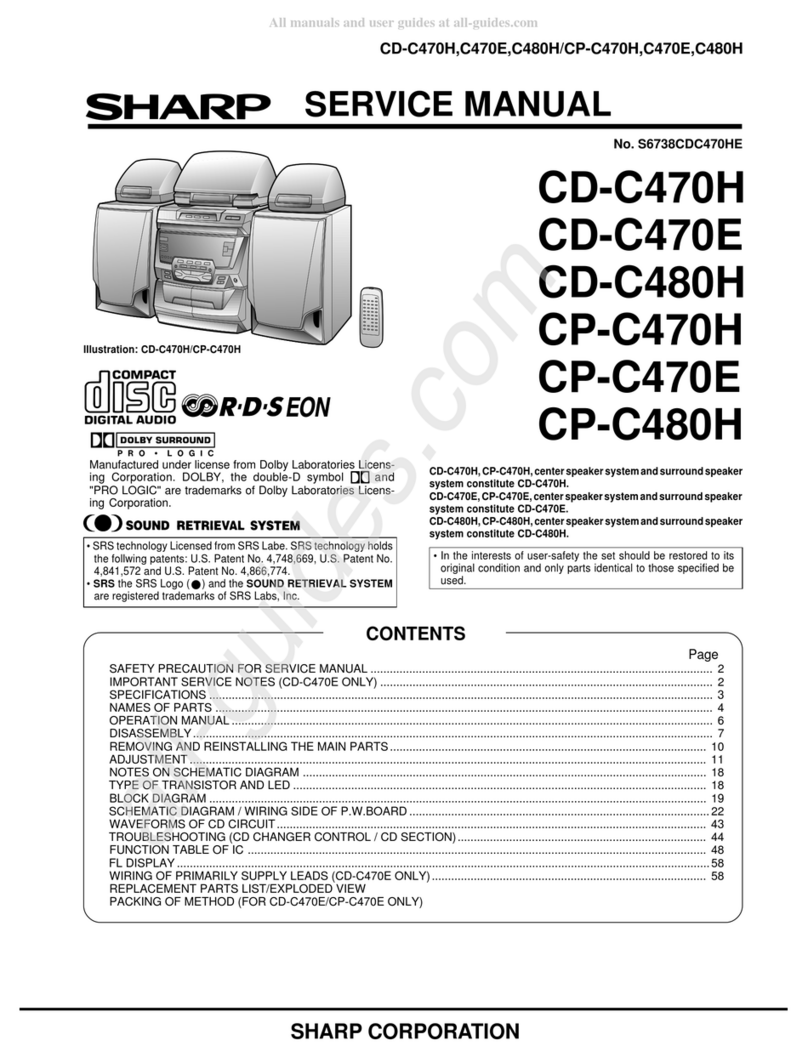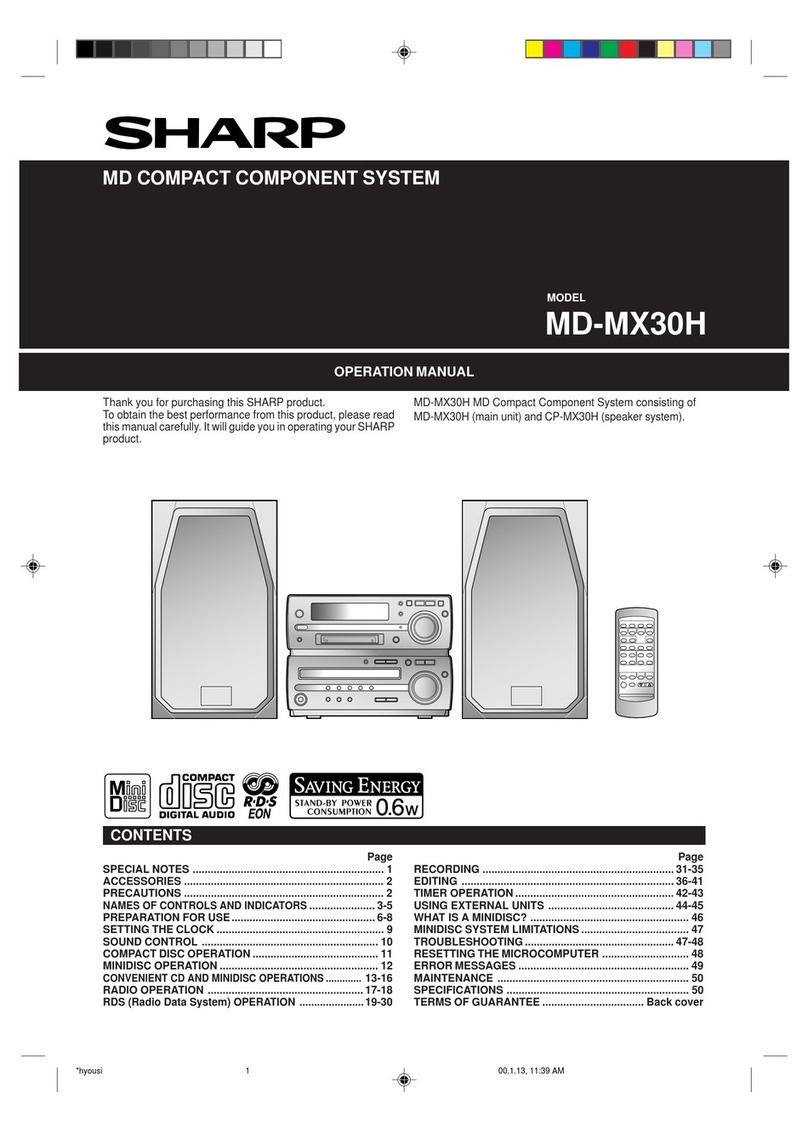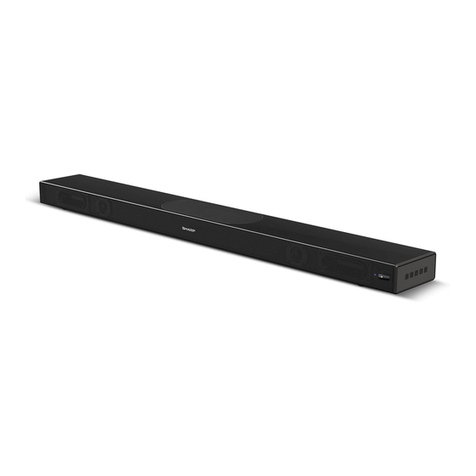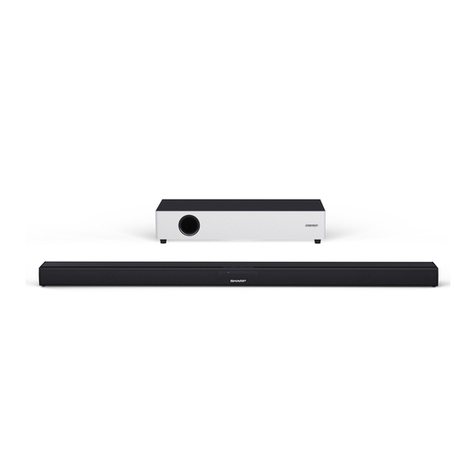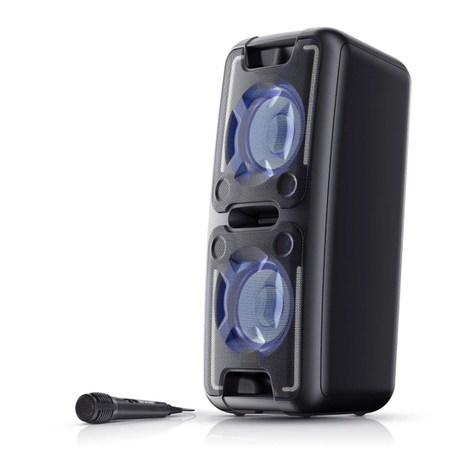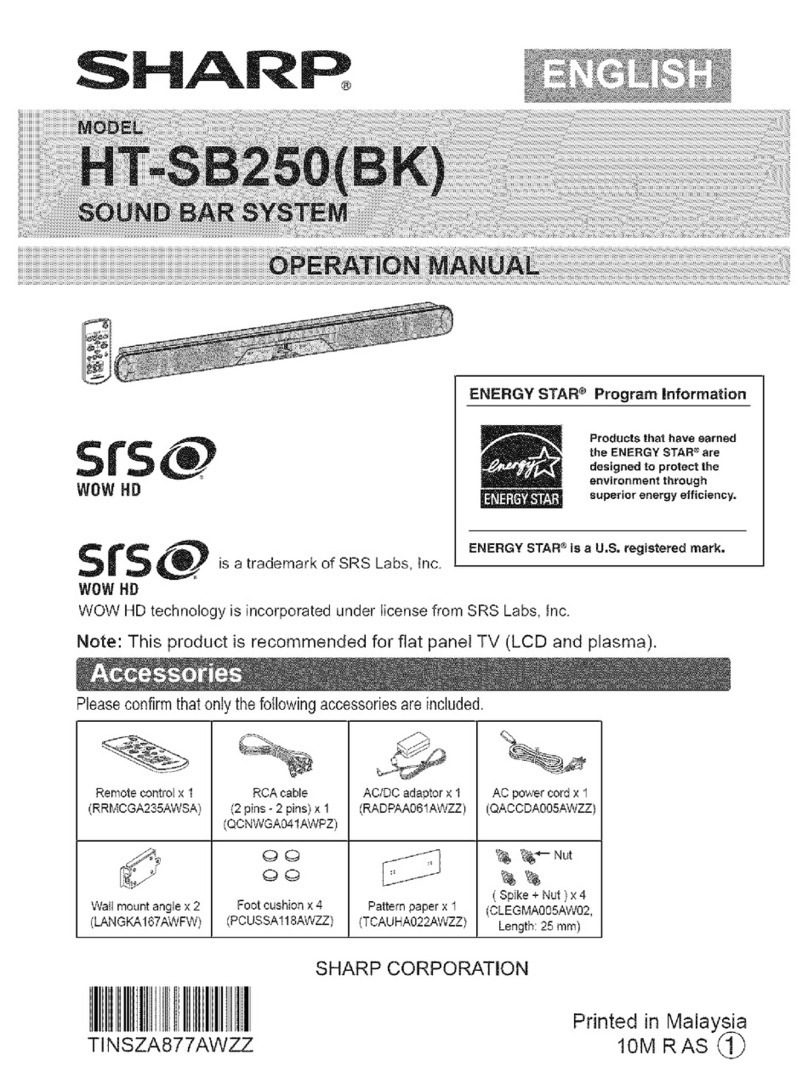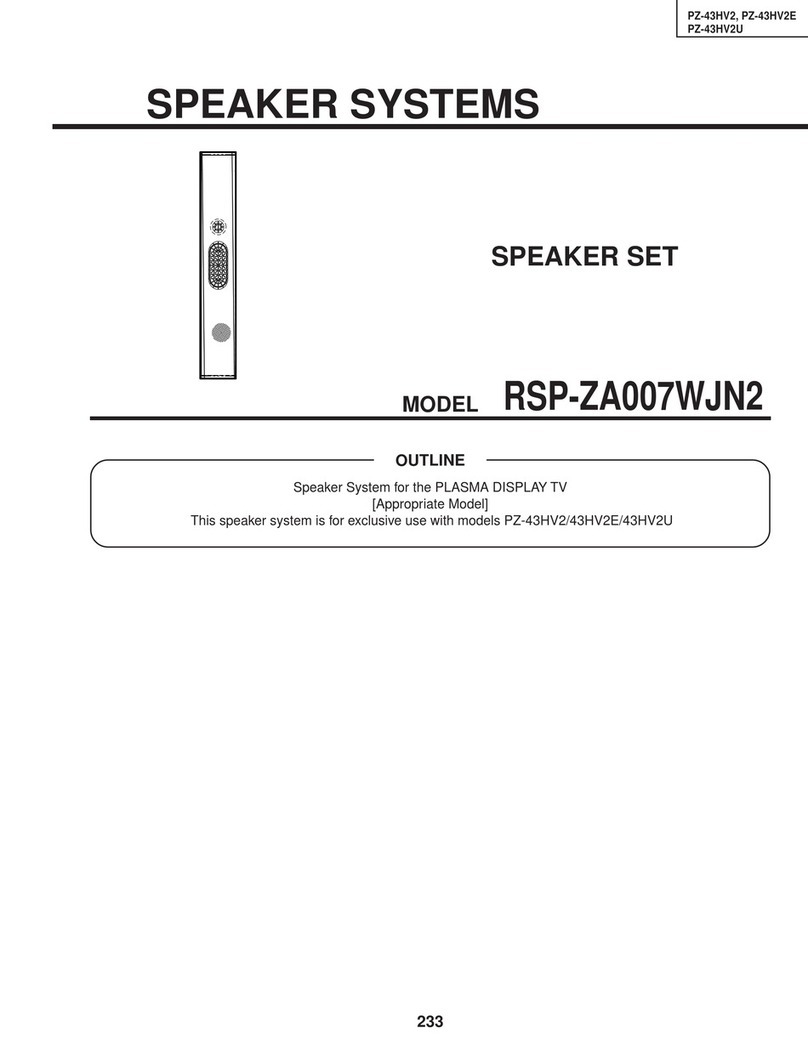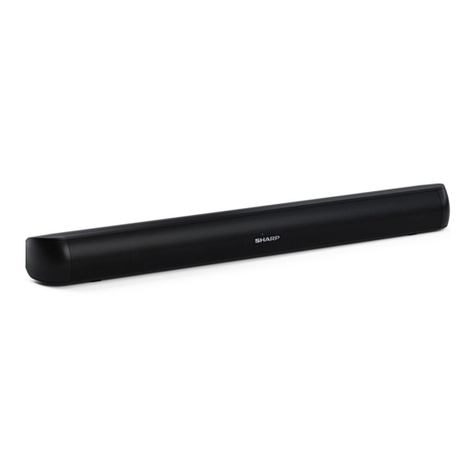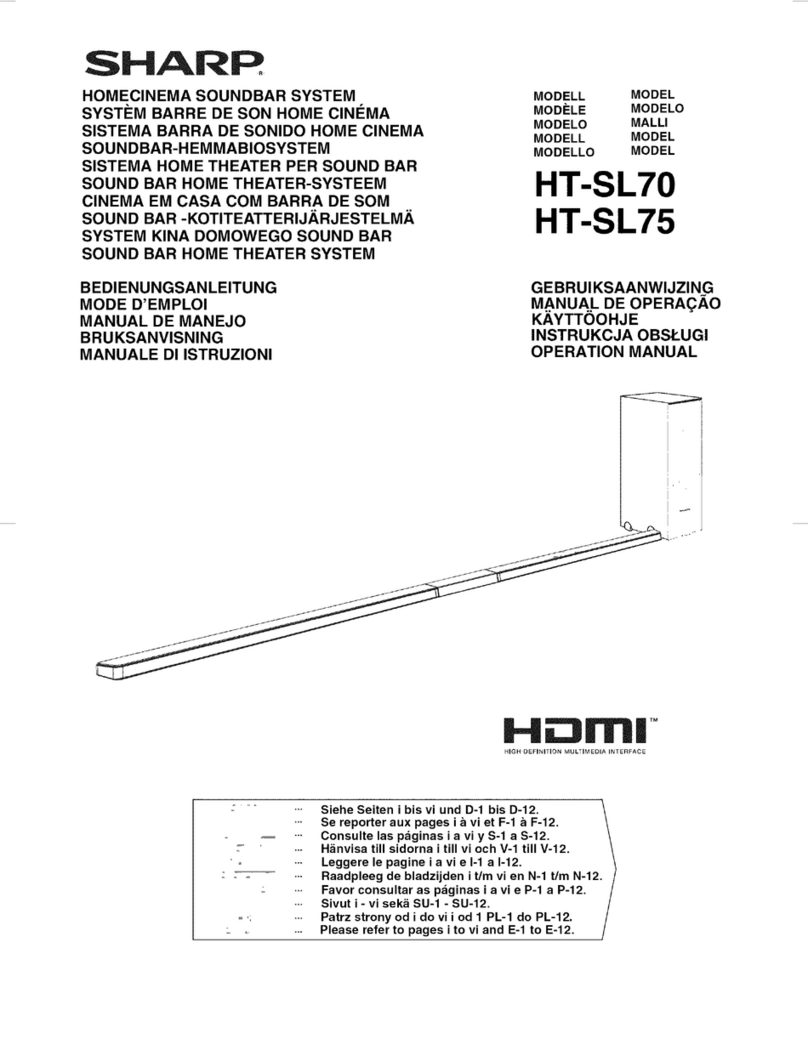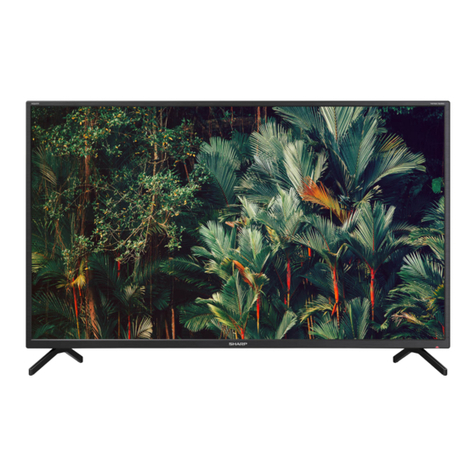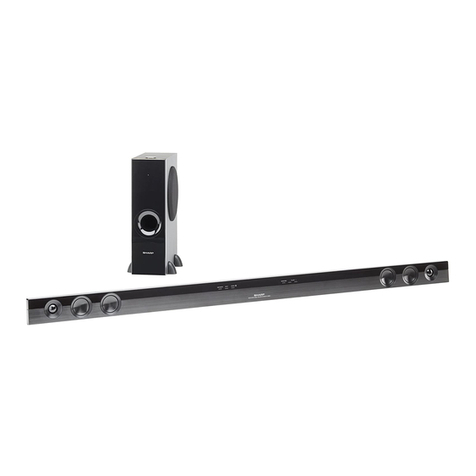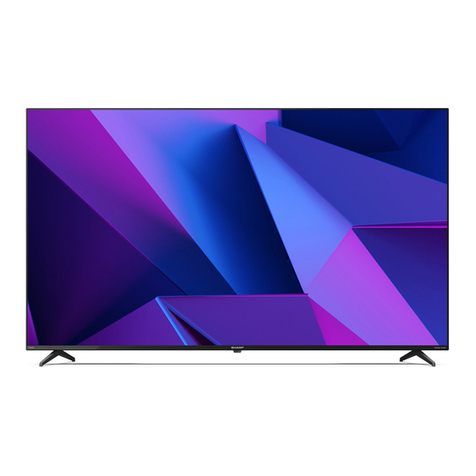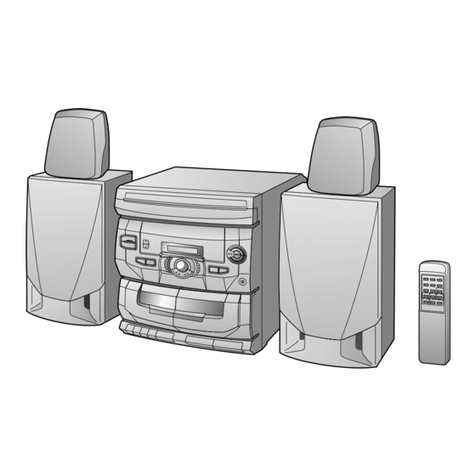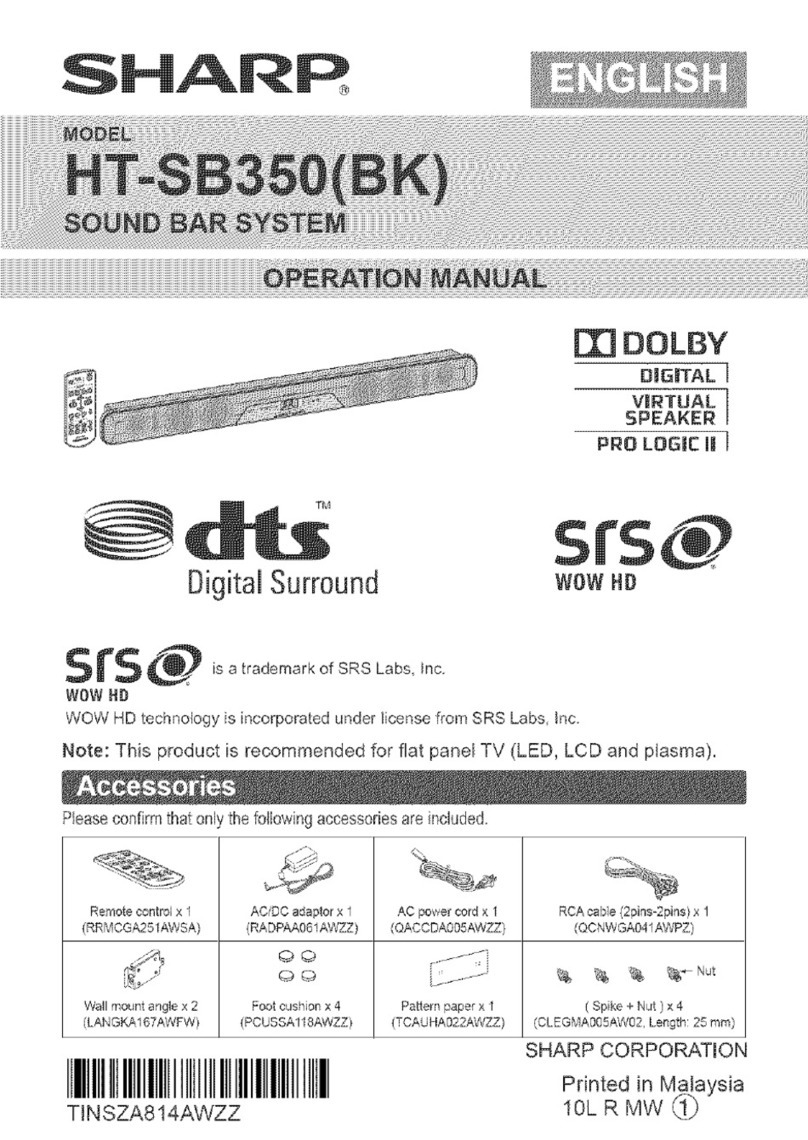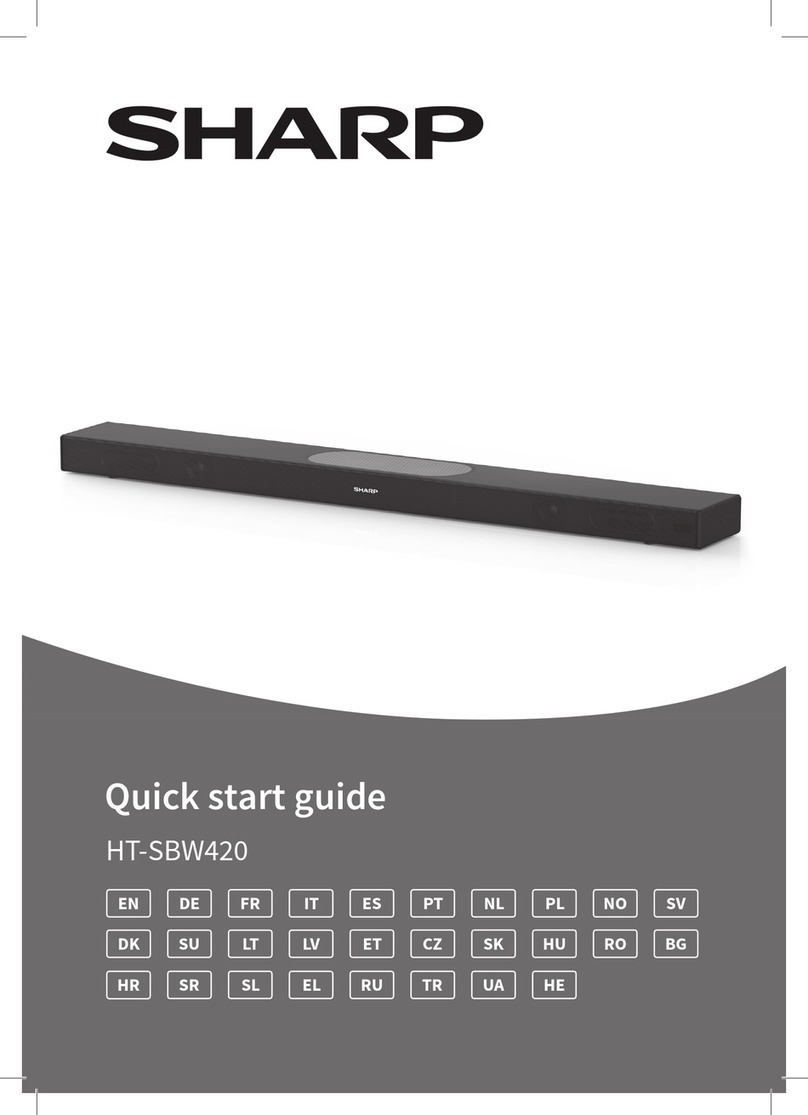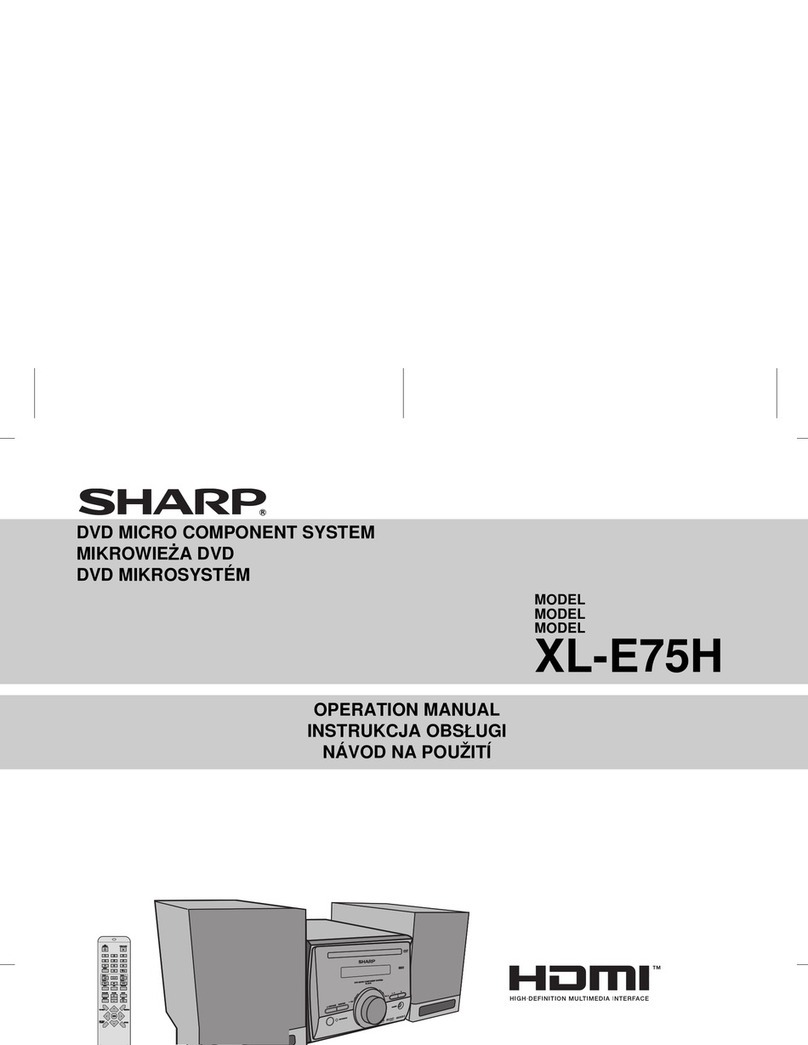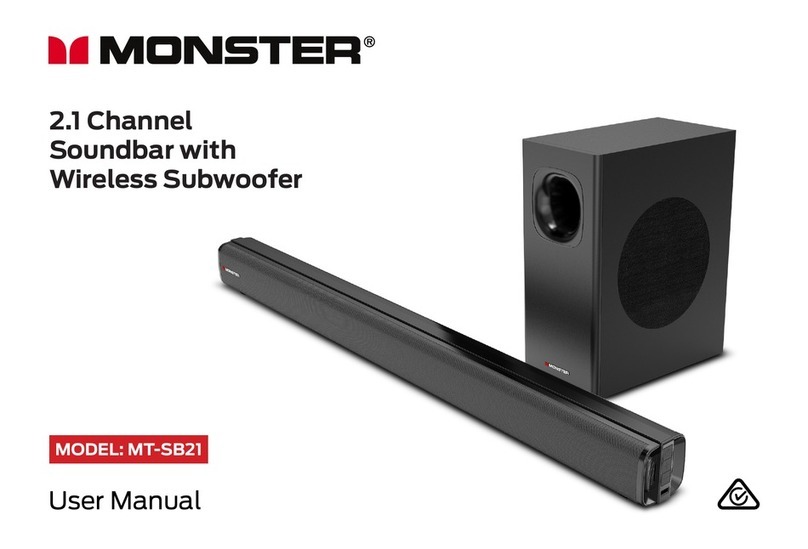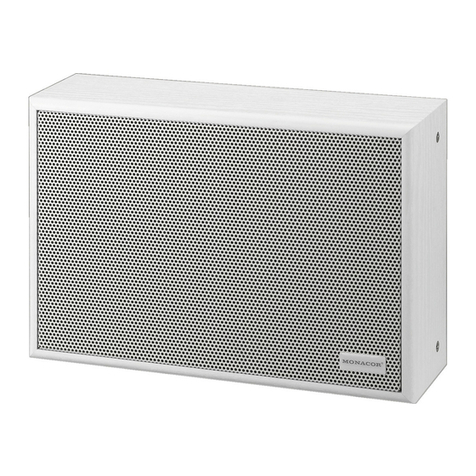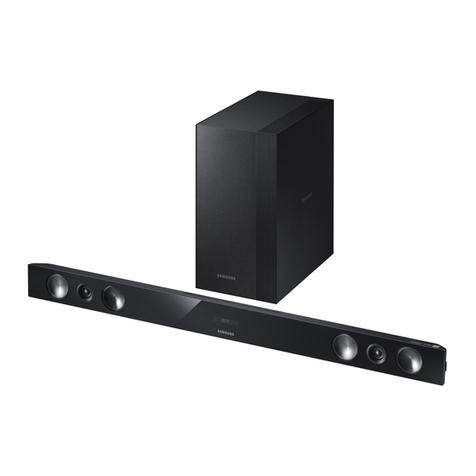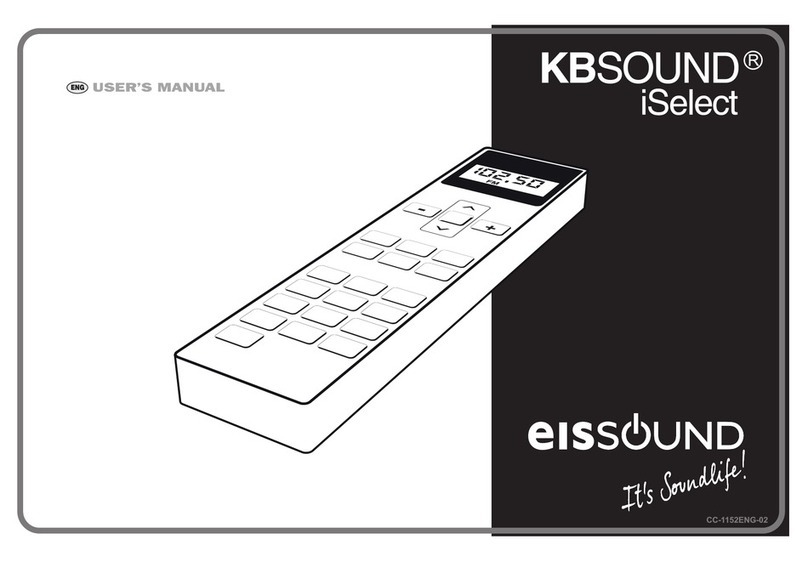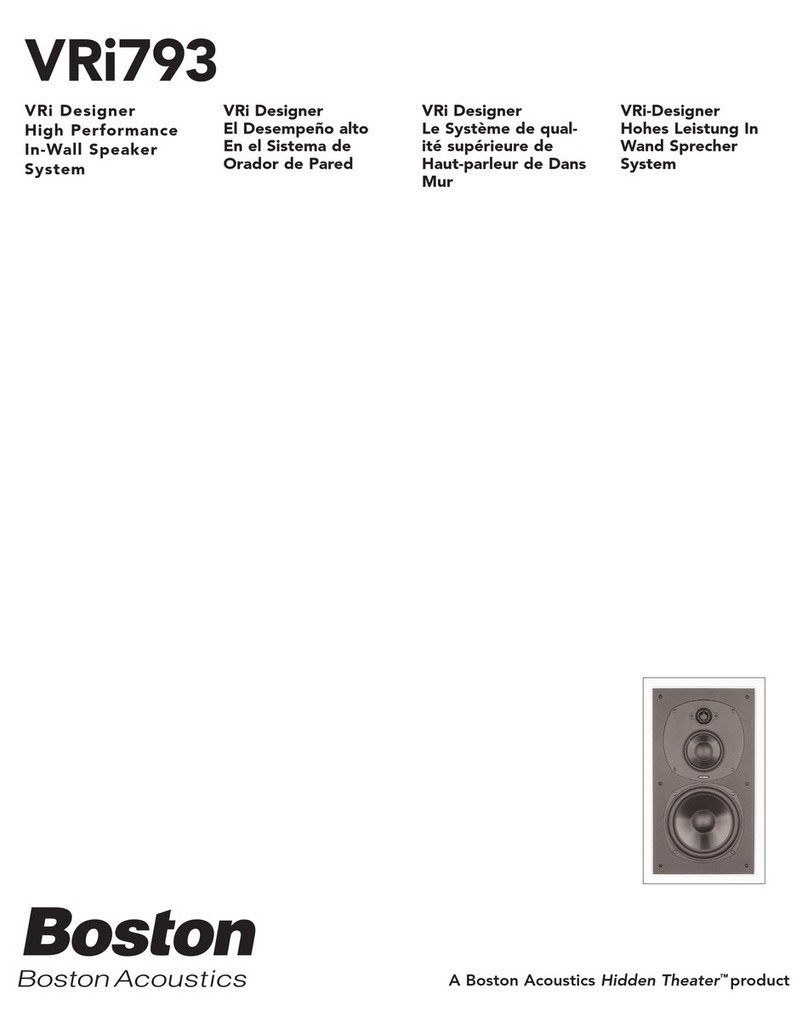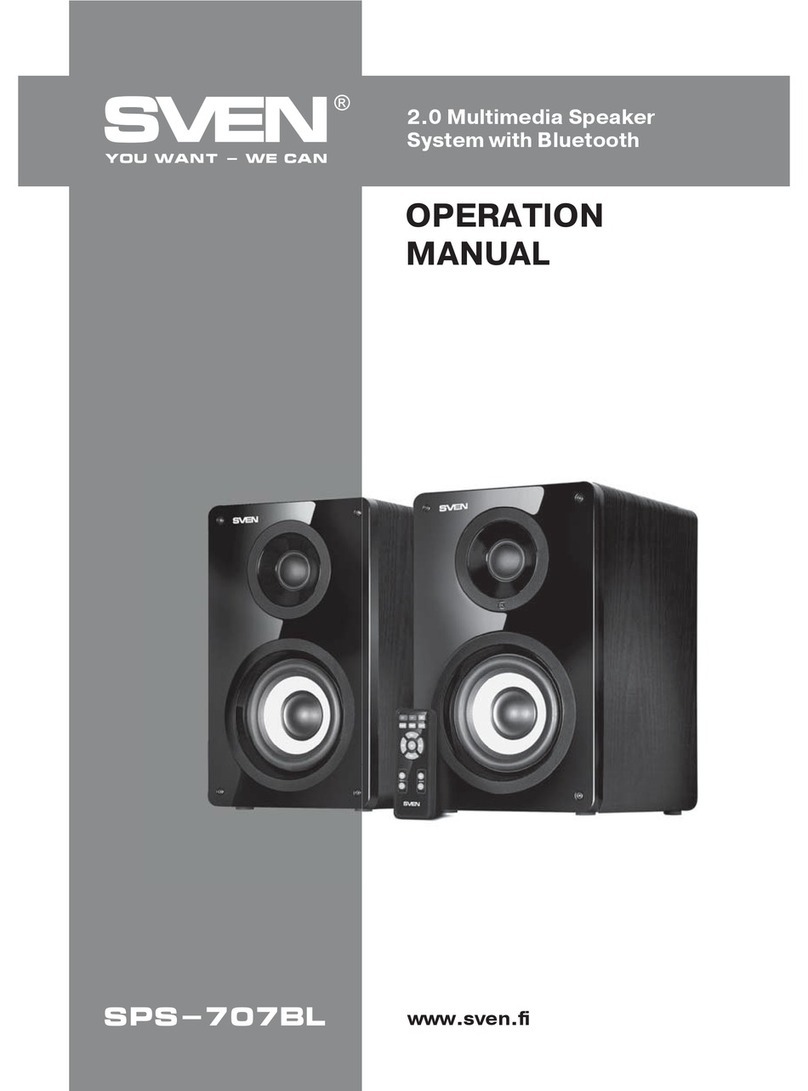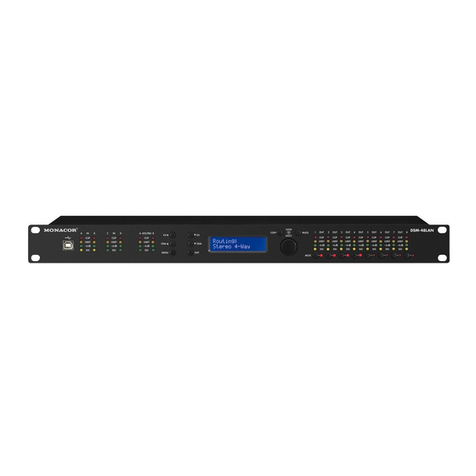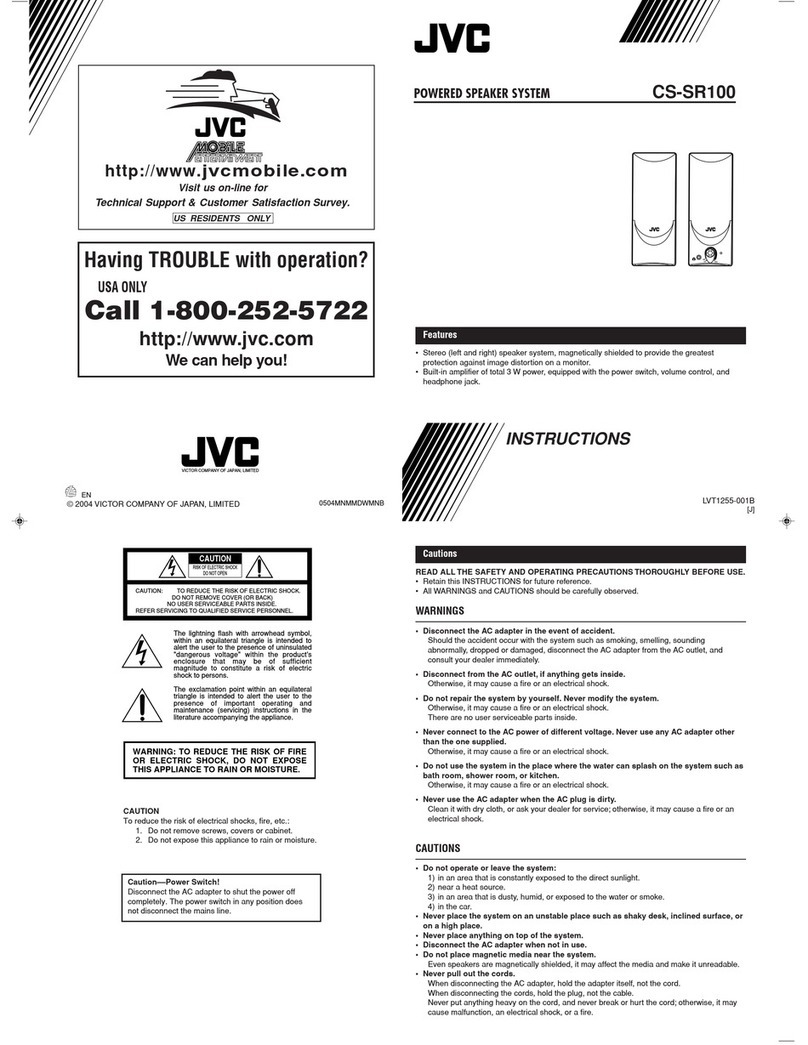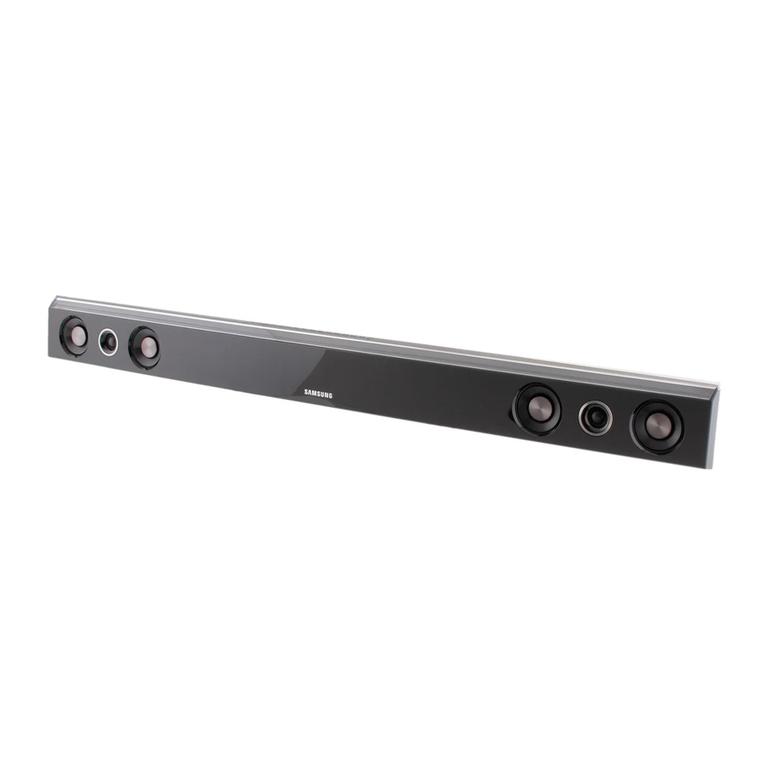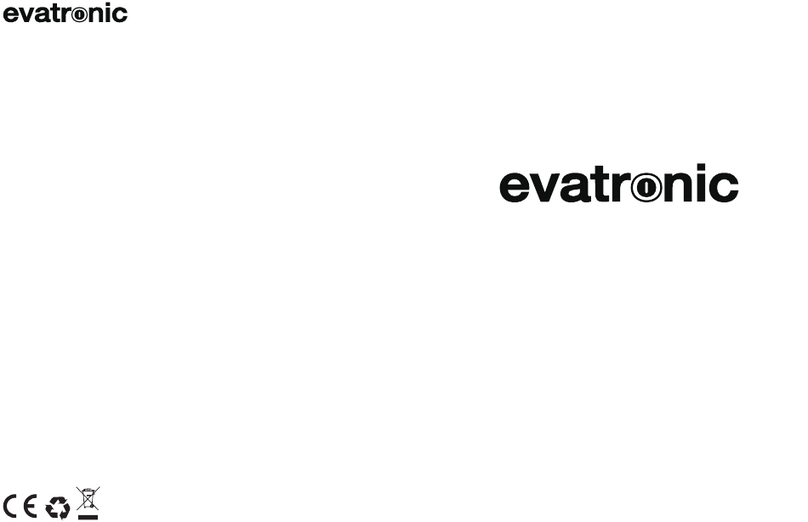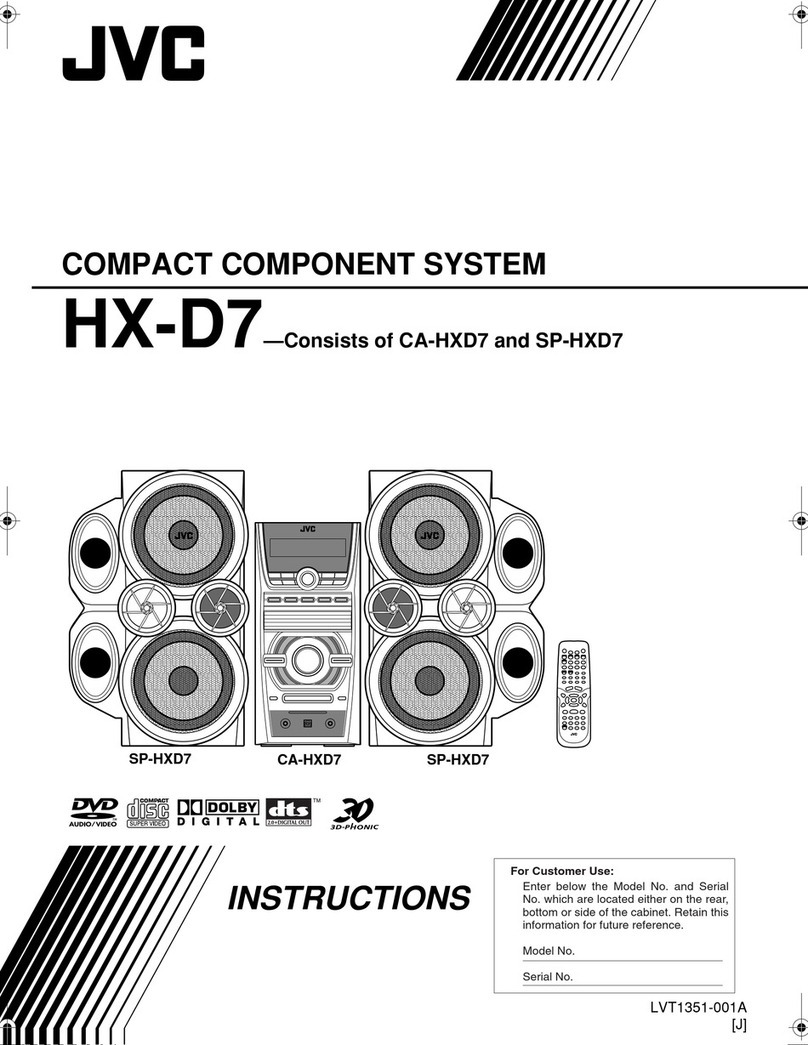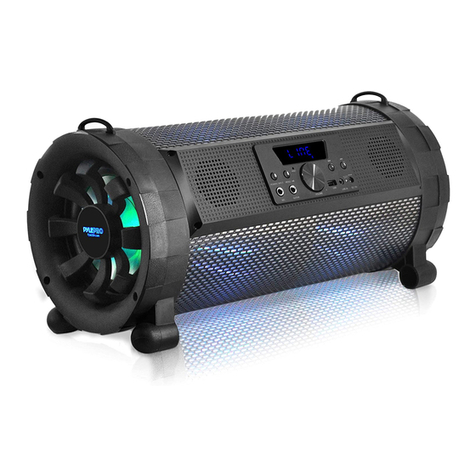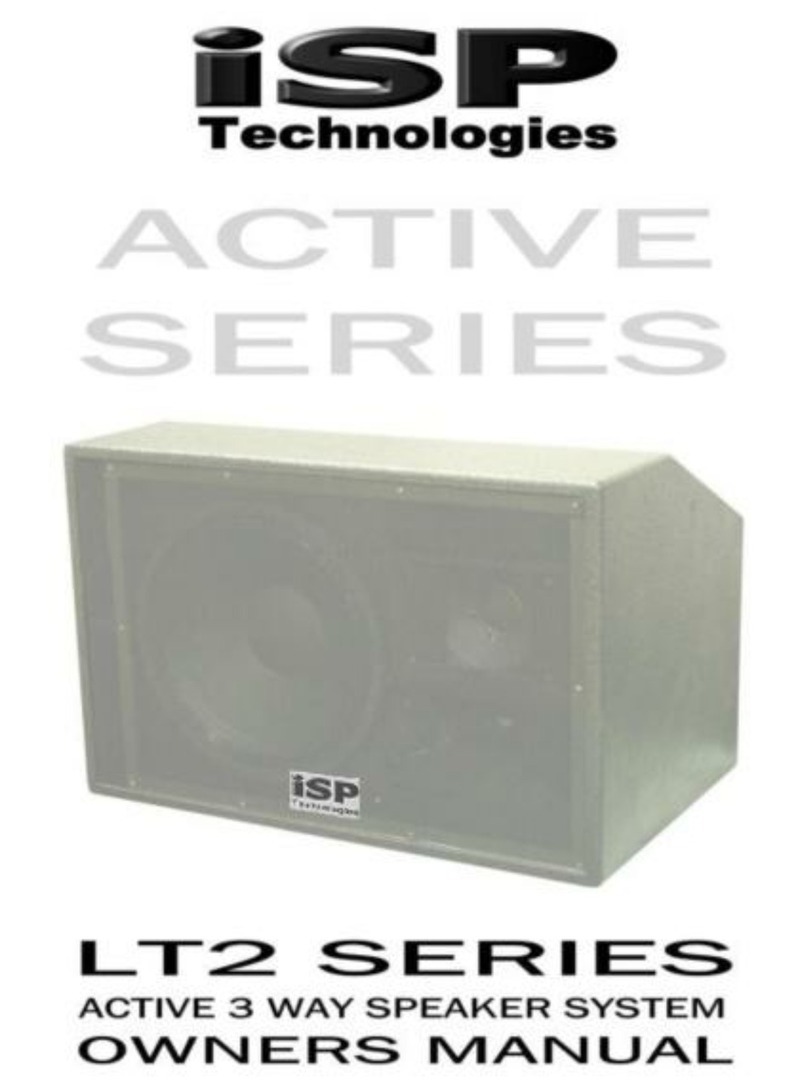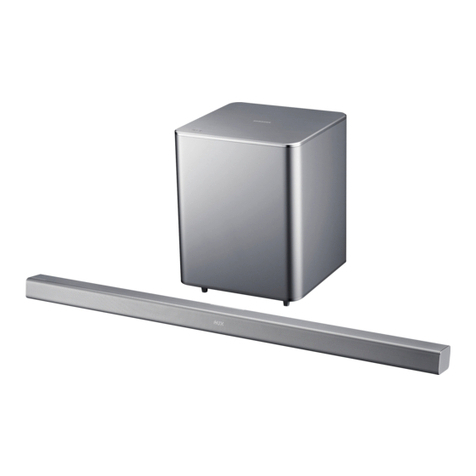– 3 –
CD-C470H,C470E,C480H/CP-C470H,C470E,C480H
Cassette deck section
Type: Compact cassette tape
Frequency response: 50 - 14,000 Hz (Normal tape)
50 - 15,000 Hz (CrO2 tape)
Motor: DC motor with electronic governor x 1
Signal/noise ratio: 55 dB (TAPE 1, playback)
50 dB (TAPE 2, recording/playback)
Bias and erasure
system: AC
Tape speed: 4.76 cm/sec. (1-7/8 ips)
Wow and flutter: 0.2 % (DIN 45 511, playback)
(CD-C470H/C480H)
Wow and flutter: 0.15 % (WRMS)
(CD-C470E)
Heads: TAPE-1: Playback x 1
TAPE-2: Record/playback x 1
Erase x 1
Type: 3-way type [130 mm (5-1/8") woofer,
50 mm (2") tweeter and super tweeter]
Maximum input power: 50 W
Impedance: 8 ohms
Dimensions: Width; 200 mm (7-7/8")
Height; 300 mm (11-13/16")
Depth; 252 mm (9-15/16")
Weight: 2.7 kg (6.0 lbs.)/each
Type: 100 mm (4") full-range speaker
Maximum input power: 20 W
Impedance: 6 ohms
Dimensions: Width; 262 mm (10-5/16")
Height; 145 mm (5-3/4")
Depth; 201 mm (7-15/16")
Weight: 1.4 kg (3.1 lbs.)/each
Type: 100 mm (4") full-range speaker
Maximum input power: 10 W
Impedance: 12 ohms
Dimensions: Width; 170 mm (6-3/4")
Height; 122 mm (4-13/16")
Depth; 176 mm (6-15/16")
Weight: 0.7 kg (1.5 lbs.)/each
General
Power source: AC 230 V, 50 Hz
Power consumption: 160 W
Dimensions: Width; 270 mm (10-5/8")
Height; 300 mm (11-13/16")
Depth; 368 mm (14-1/2")
Weight: 6.8 kg (15.0 lbs.)
Amplifier section
Output power: PMPO; 300 W (total)
(CD-C470H/C480H) (Front)
MPO; 110 W (55 W + 55 W) (DIN 45 324)
RMS; 50 W (25 W + 25 W) (DIN 45 324)
42 W (21 W + 21 W) (DIN 45 500)
(Center)
MPO; 20 W (DIN 45 324)
RMS; 10 W (DIN 45 324)
7 W (DIN 45 500)
(Surround)
MPO; 20 W (total) (DIN 45 324)
RMS; 10 W (total) (DIN 45 324)
7 W (total) (DIN 45 500)
(CD-C470E) (Front)
MPO; 110 W (50 W + 50 W) (10 % T.H.D)
RMS; 50 W (25 W + 25 W) (10 % T.H.D)
42 W (21 W + 21 W) (0.9 % T.H.D)
(Center)
MPO; 20 W (10 % T.H.D)
RMS; 10 W (10 % T.H.D)
7 W (0.9 % T.H.D)
(Surround)
MPO; 20 W (total) (10 % T.H.D)
RMS; 10 W (total) (10 % T.H.D)
7 W (total) (0.9 % T.H.D)
Input terminals: Video/Auxiliary (audio signal) x 2;
500 mV/47 kohms
Output terminals: Front speakers; 8 ohms
Center speakers; 6 ohms
Surround Speakers; 12 ohms
CD digital output (optical)
Headphones; 16-50 ohms
(recommended; 32 ohms)
Compact disc player section
Type: 3-disc multi-play compact disc player
Signal readout: Non-contact, 3-beam semi-conductor
laser pickup
D/A Converter: 1-bit D/A converter
Frequency response: 20 - 20,000 Hz
Dynamic range: 90 dB (1 kHz)
Tuner section
Frequency range: FM; 87.5 - 108 MHz
MW; 522 - 1,620 kHz
LW; 153 - 281 kHz
SPECIFICATIONS
FOR A COMPLETE DESCRIPTION OF THE OPERATION OF THIS UNIT, PLEASE REFER
TO THE OPERATION MANUAL.
Specifications for this model are subject to change without
prior notice.
CD-C470H/CD-C470E/CD-C480H
CP-C470H/CP-C470E/CP-C480H
CENTER SPEAKER SYSTEM
SURROUND SPEAKER SYSTEM
